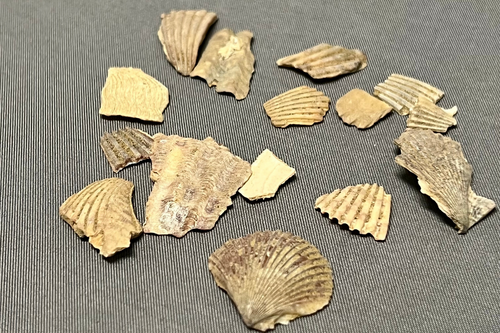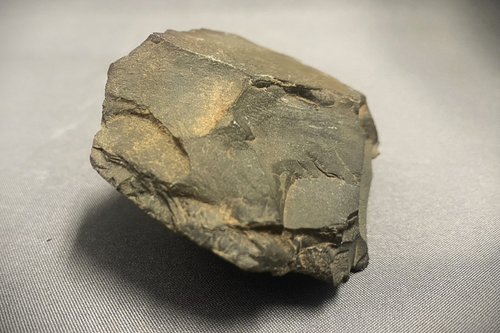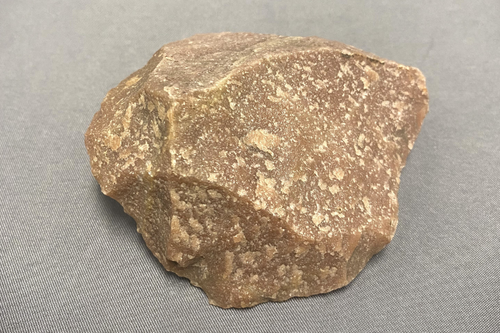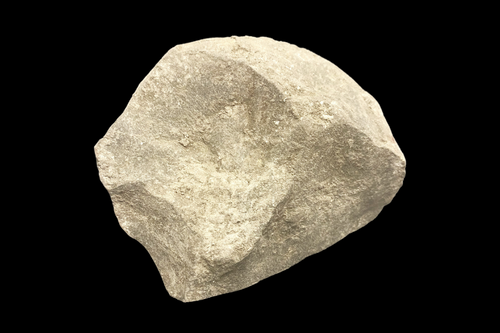
New Acquisitions: SDAC 751
Take a behind-the-scenes peak at our most recently acquired collections in our virtual exhibit New Acquisitions. To accompany this exhibit, each month the SDAC social media and collections blog New Acquisitions: A Closer Look will take a closer look at the collections that are being curated, the research value they provide, and the importance of archaeology in San Diego County.
The San Diego Archaeological Center houses many prehistoric and historic collections from the San Diego County adjacent regions. The Center is equipped with over 5,000 square feet of vault space that allow us to provide long-term curation and care for a wide range of archaeological materials, including artifacts, ecofacts, maps, photographs, and site records. Partnering with local colleges and universities provides a setting for volunteers and students interested in archaeology to gain hands-on experience working with archaeological collections.
How Does the SDAC Acquire New Collections?
Most of the collections that are curated at the Center come to us from Cultural Resource Management (CRM) firms. These CRM firms work with developers and homeowners from around the county to make sure that construction is done using ethical and sustainable methods and that archaeological sites are protected and documented. Once their work is complete, CRM firms transfer titles for permanent curation of collections at the Center for long-term preservation and care.
What is in a Collection?
New collections delivered to the Center have many pieces. They must contain a site report, master catalog of curated objects, information about inadvertent discoveries, and other supplemental documentation such as field notes, maps, and photographs.
SDAC 751 – Delivered June 16th, 2022
Project Name: Cultural Resources Data Recovery Report for CA-SDI-10070 and CA-SDI-10071, Otay Mesa, California
Site(s): CA-SDI-10070 and CA-SDI-10071
USGS Quad Location: Otay Mesa 7.5’
Year of Excavation: 2021
CRM Firm: AECOM
The Cultural Resources Data Recovery for CA-SDI-10070 and CA-SDI-10071, Otay Mesa, California project was conducted to mitigate impacts of mass grading and development to the sites listed above.
Previous work conducted in this project area had identified that these sites were significant, and therefore, mitigation, such as data recovery, was required of the developer for the development to move forward. A total of 1,269 cultural resources were collected during the 2021 data recovery. Of that, a high percentage (ninety-two percent) was debitage, or the waste produced during stone tool reduction, and the other eight percent were tools.
Archaeologists look through all past data recorded from sites prior to conducting their data recovery. Their goal is to add to the research that already exists and, by doing so, the archaeological record. By using previous research, they can view the current project through a larger lens.
The project archaeologists working on this development had five research questions that they looked to address.
- Chronology
- Subsistence and Environmental Setting
- Settlement Patterns
- Trade and Travel
- Lithic Technology
Chronology What was the period of Native American occupation for Otay Mesa?
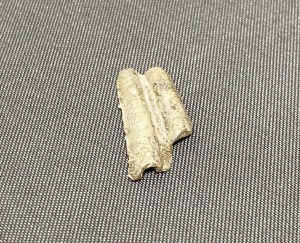
Previous work determined that Otay Mesa occupation can be dated from 11,000 to 1,000 years ago. Six AMS radiocarbon dates were recorded from organic materials collected during this and previous projects.
During the present study, no shell was found at SDI-10070 but at SDI-10071 four shell samples were submitted. These four shells had different habitats including rocky shore and lagoon/estuary. The previous dating combined with the present project revealed the site to be occupied 8,583 to 1,951 years ago.
Subsistence and Environmental Setting
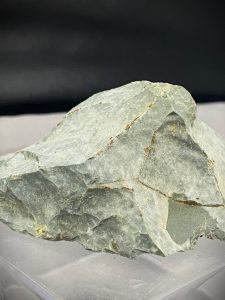
“The most pronounced environmental change for coastal southern California was the rise in sea level that occurred during the Early to Middle Holocene, with associated flooding of coastal valleys and the creation of lagoons. Evidence of environmental change in lagoons is based on analysis of core samples combined with radiocarbon dates; and radiocarbon-dated shellfish samples taken from archaeological sites near lagoons. Environmental studies using shellfish to explain site patterning and environmental change include Bull and Kaldenberg (1976), Gallegos (1985), Masters (1988), Miller (1966), Warren and Pavesic (1963), and Warren and True (1961).”[1]
The results from data recovery of the 2021 project suggest that these sites were located on knolls about 1,000 feet apart from the other. With seasonal plants and fresh water in a nearby canyon, these locations would have been ideal for occupants during the Early and Middle Holocene.
After comparing the new data with past data from these sites, archaeologists can infer that SDI-10070 and SDI-10071 were special use, short-term habitation sites used on a seasonal basis for hundreds of years to process seasonal resources. To determine exactly what these resources were, a residue analysis is needed. Manos and metates recovered would have been used to process vegetal materials, while SEUTs (or Steep-Edged Unifacial Tools) suggest scraping of plant products, preparation of small animal skins, and wood working.
Settlement Pattern
The many distinct types of cultural resources, artifacts, and ecofacts found at a site tell archaeologists how the site was used by its occupants in a prehistoric context. Settlement patterns in Southern California have been debated by archaeologists. The archaeologists authoring this report agree that the sites here can be divided into residential, field camps, and locations where tasks like material extraction took place. Residences are primarily located near potable water. Field camps are further from water, but ‘still less than 200 meters’[2] away.
Trade and Travel
By examining the diverse types of lithic materials found at a site, archaeologists can determine trade patterns and map routes. In San Diego County, it is known that the material obsidian was a popular trade item. When this material is found at a site, depending on the age range of the site, it can be traced to a specific location. Obsidian is not a natural occurring material in San Diego County. Gallegos states that, “If obsidian was present in early and middle Holocene sites in San Diego County, then it was obtained from the Coso Range, located over 300 miles to the north of Otay Mesa in the lower Owens Valley. Obsidian from late Holocene sites is usually sourced to Obsidian Butte in Imperial County. Obsidian was available from other locations, such as Baja California, which have not been specifically sourced.”[3]
While obsidian has been found at Otay Mesa sites, it is rare and was not recovered from the sites in this project. The resources that were found and recovered (metavolcanic, granitic, shell, chert, and quartzite) could have all been found locally or within a 10-mile radius, making trade and travel unlikely.
Lithic Technologies
The many stone tools found at a site can help archaeologists infer what types of tools the Indigenous groups were using and when. “It is hypothesized that manufacturing techniques will reflect the properties of the individual lithic material and proposed use of the tool. Climate change (i.e., wetter to drier) through time, and the resulting change in plant and animal resources, as well as changes in diet should be reflected in change(s) through time in Early to Late Holocene tool kits (i.e., flaked lithic tools, core/nodule tools, ground stone implements).”[4]
Artifact Analysis
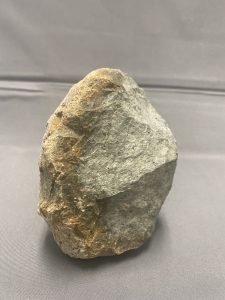
Lithic materials found at these two sites are primarily metavolcanic quarried from the Santiago Peak Metavolcanic Mountain. Material was abundant in this area. Granitic materials were also recovered, and these would been found east about ten miles away. Chert and quartzite are also thought to have been from local sources.
Battered implements, or hammer stones, were used to shape and sharpen manos (hand tools) and metates (grinding tools). From previous work and this project, forty-six battered implements were recovered from these sites. They were all made of fine-grained metavolcanic material.
Two bifaces (tools used on more than one side) were recovered during excavation. One is a point or knife made of volcanic material, and the other is made from quartz.
Thirteen cores made from metavolcanic stone were recovered in previous studies, and their presence supports core reduction activities common to Otay Mesa.
The thirty-eight manos that were recovered from these sites show evidence of shaping, pecking, flaking, and end battering. These methods suggest that the manos were reused repeatedly on a seasonal basis, for hundreds of years. Twenty-eight metates were recovered, and, in general, had flat basins, used for processing fibers and like elements, while some had shallow basins, used for processing harder materials like seeds.
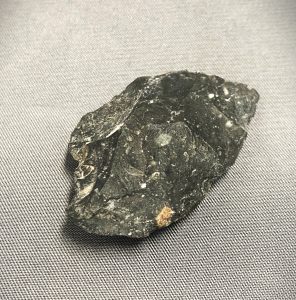
An analysis of the pollen starch and protein residue was conducted on some of the lithic materials recovered, including two metate fragments, a scraper, and a biface.
The study concluded that the metate fragments had been burned after their last use, affecting the pollen on the surface. Regardless, moderate quantities of pollen related to the goosefoot and sunflower families was detected. Smaller quantities of local plants, including ragweed, sagebrush, buckwheat, legumes, and Jacob’s ladder were also recovered. A small amount of pine pollen was detected, and as pine was not locally found, this indicates that it had been transported from another location.
All samples were tested for protein residue, but the only one that tested positive was a biface. There was a positive reaction during processing to a member of the trout or salmon family. This was an exciting discovery, as Susie Arter, Co-Director of the San Diego Natural History Museum Zooarchaeology Lab, responded to the report for this project by stating: “That is great news to finally find hard evidence that these Steelhead/Rainbow Trout were consumed by native people. Despite their limited presence to date, Oncorhynchus mykiss still occur sporadically in some of our SD County Rivers according to Caltrout.org. To my knowledge Mark Roeder never [identified] this species from SD County sites… I do remember Mark saying they were caught and consumed but that their bones do not preserve so we are not seeing them. Maybe he said that because trout bones dissolve in highly acidic soils?”[5]
Summary of Project
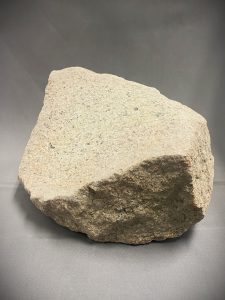
After reviewing previous research and data and the results of the 2021 project, past theories of the site area were reinforced. This site now has a total of 2,191 cultural resources, artifacts, and ecofacts collected which give archaeologists an overview of how the space was used in a prehistoric context. The assemblage of manos, metates, and battered implements makes up 30% of the activities being conducted at these sites, while scraping, woodworking, and animal processing makes up 53%, and chipped stone tools, including points and knives, make up 1%.
This allowed the authors to infer that the site was used on a seasonal basis, for processing of a local seasonal resource. A more detailed residue analysis of the other stone tools and resources could give a better idea of what was being utilized and harvested. The materials of the stone tools themselves reflect the need for use of local materials and tool maintenance while active at the site. “The presence of bifaces, manos, metates, battered implements, steep edge unifacial tools, and shell indicates that these two sites are special use, seasonal, short-term habitation sites, which were reoccupied numerous times over hundreds of years. These sites would fit Binford’s definition of a field camp where specialized tasks were conducted. Based on the presence of SEUTs, milling tools, battered implements, and FAR, the prehistoric inhabitants of sites CA-SDI-10070 and CA-SDI-10071 used these locations to procure and process vegetal material that required the use of manos, metates and SEUTs. SEUTs suggest scraping activities of plant products, such as yucca fiber production; or preparing rabbit skins; and/or woodworking. Radiocarbon dating of six shell samples (one for CA-SDI-10070 and five for CA-SDI-10071) place site occupation for CA-SDI-10070 and CA-SDI-10071 circa 1,951 to 8,583 years ago.”[6]
Come back next month as we dig deeper on a project recently brought in from a significant archeological site in La Jolla!
By Jessica McPheters, Collections Manager
Reference
Natalie J. Brodie & Dennis R. Gallegos. (2021). Cultural Resources Data Recovery Report for CA-SDI-10070 and CA-SDI-10071, Otay Mesa, California.
[1] (Natalie J. Brodie & Dennis R. Gallegos, 2021, p. 29)
[2] (Natalie J. Brodie & Dennis R. Gallegos, 2021, p. 30)
[3] (Natalie J. Brodie & Dennis R. Gallegos, 2021, p. 32)
[4] (Natalie J. Brodie & Dennis R. Gallegos, 2021, p. 34)
[5] (Natalie J. Brodie & Dennis R. Gallegos, 2021, p. 64)
[6] (Natalie J. Brodie & Dennis R. Gallegos, 2021, p. 66)


